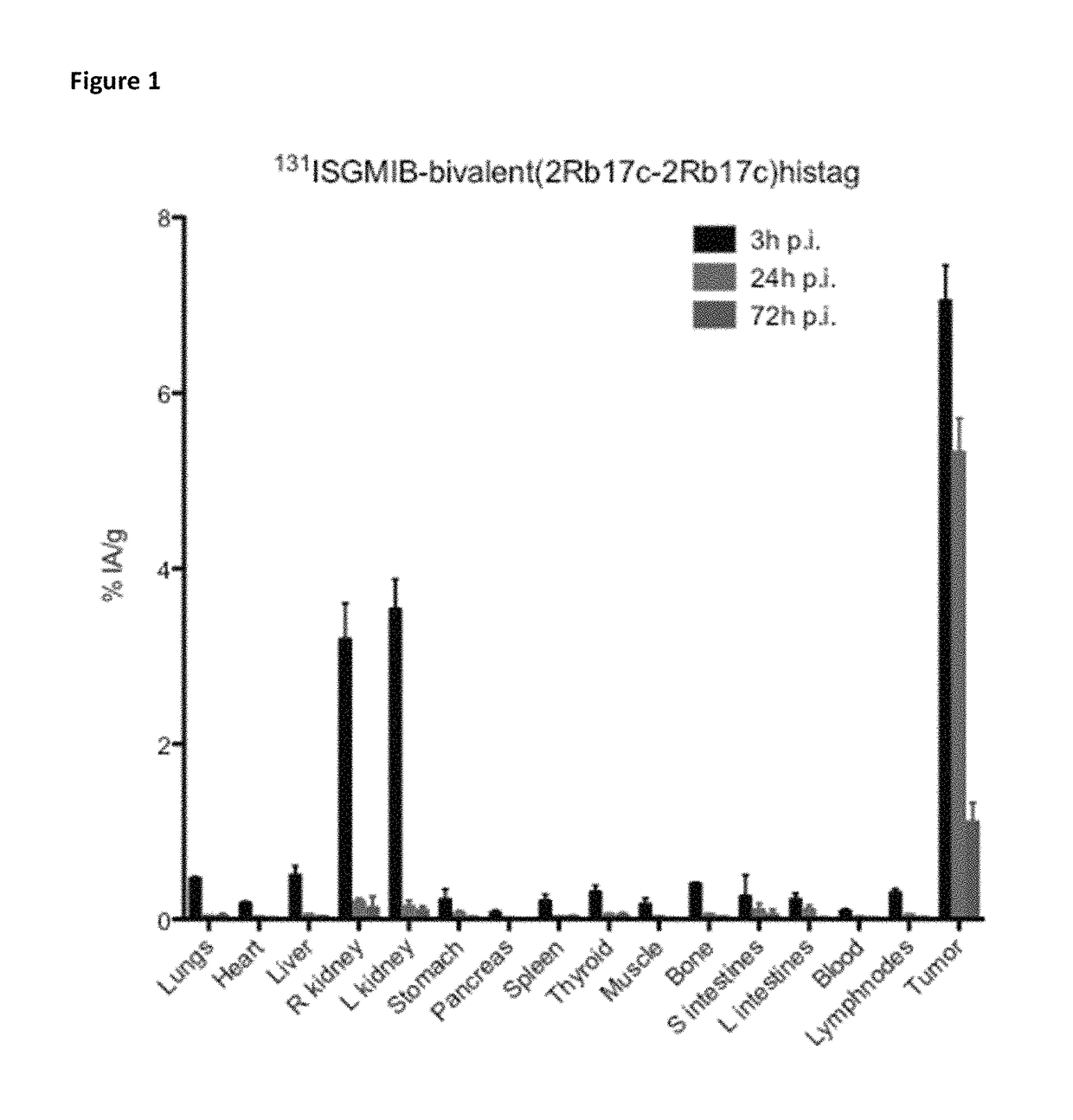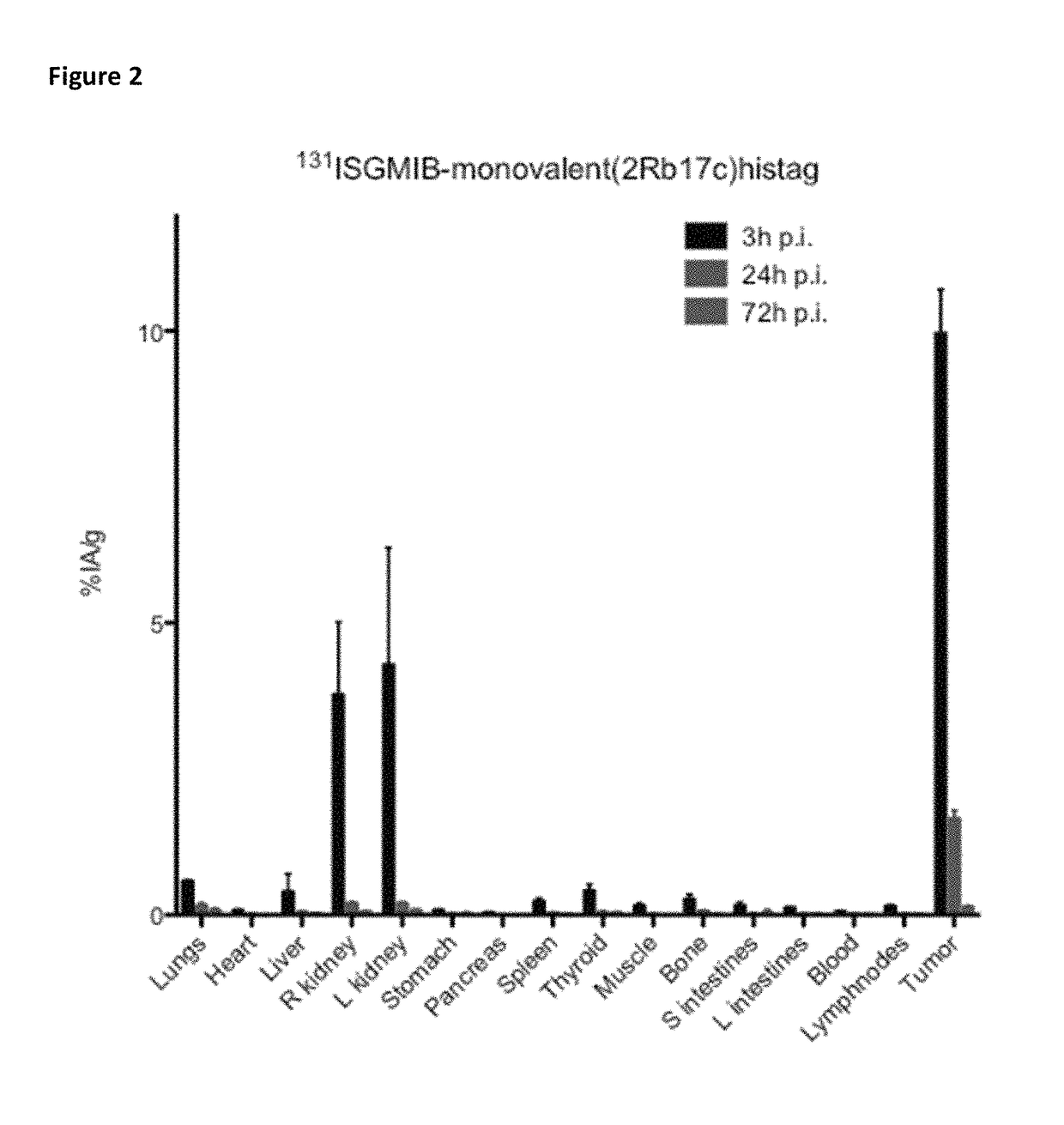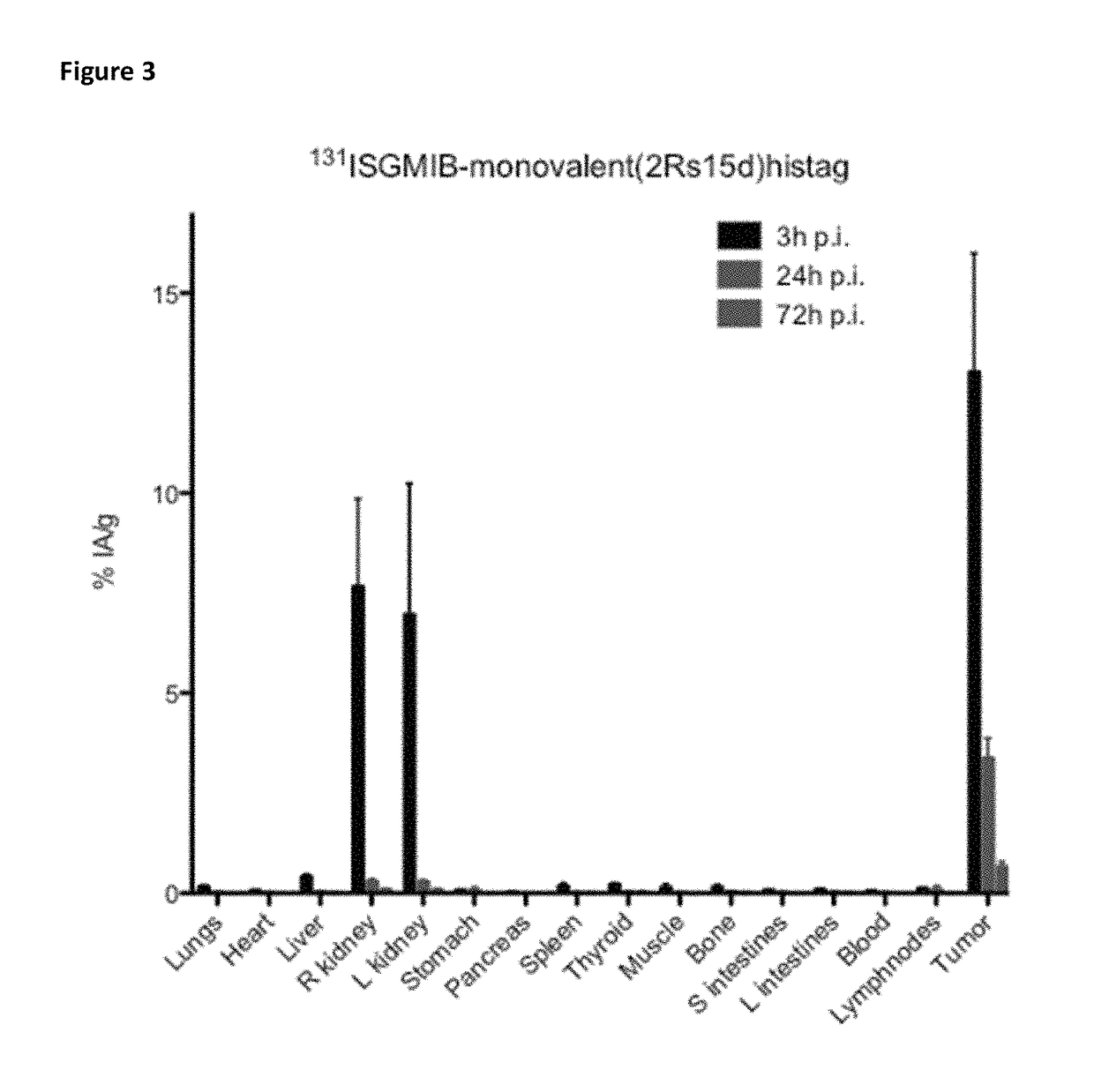Radio-labelled antibody fragments for use in the prevention and/or treatment of cancer
a radio-labelled and antibody technology, applied in the field of radio-labelled antibody fragments, can solve the problems of shortening the half-life of whole antibodies, affecting the effect of tumor uptake or cancer cell uptake,
- Summary
- Abstract
- Description
- Claims
- Application Information
AI Technical Summary
Benefits of technology
Problems solved by technology
Method used
Image
Examples
example 1
Radiolabelling of Anti-HER2 VHH's
1. 131-Iodine Experimental Setup
Radiochemical Procedure
[0399]The established procedure for radioiodination of VHH's was performed as follows: the necessary amount of sodium [I*] iodide was transferred to a mixture of 3% (v / v) Acetic Acid, 30% (v / v) tert-butylhydroperoxide, and N-succinimidyl 4-[N1,N2-bis(tert-butyloxycarbonyl) guanodinomethyl]-3-(trimethylstannyl)benzoate, all dissolved in chloroform. While stirring, the mixture was incubated for 50 min at room temperature. Subsequently, [I*]SGMIB-BisBoc was purified on normal phase HPLC, using an ethyl acetate / hexane gradient. Deprotection was achieved after a 15 minute incubation at room temperature with trifluoroacetic acid. Finally, the deprotected [I*]SGMIB was reacted with 100 μg of the anti-HER2 VHH sequence in borate buffer pH 8.5 during 20 min at room temperature. His-tagged [131I]SGMIB-bivalent(2Rb17c-2Rb17c), His-tagged [131I]SGMIB-monovalent(2Rb17c), and His-tagged [131I]SGMIB-monovalent(...
example 2
Biodistribution and Dosimetry of Radiolabelled Anti-HER2 VHH's in Tumor HER2+Xenoqrafted Mice
[0401]Female 10-12 week old Balb c nu / nu athymic mice were implanted with 60-day continuous release 17-β-estradiol pellets (0.72 mg, Innovative Research of America: Sarasota, Fla., USA) on their back 2 days prior to tumor implantation. HER2+ / luciferase+ tumor cells (5×106) in 50% Martigel (BD Biosciences, Bedford, Mass., USA) were injected subcutaneously into the right flank and grown until they reached a volume of 350-500 mm3.
[0402]Xenografted mice were killed by an overdose of isoflurane after an intraveneous injection of His-tagged [131I]SGMIB-labeled anti-HER2 VHH's bivalent 2Rb17c (FIG. 1; Table 3), His-tagged [131I]SGMIB-labeled monovalent 2Rb17c (FIG. 2; Table 4)) and His-tagged [131I]SGMIB-labeled monovalent 2Rs15d (FIG. 3; Table 5) and dissected at 3, 24, and 72 h post injection, after which tissues of interest were removed, weighed, and counted for 131I activity in an automated gam...
example 3
Imaging and Radioimmunotherapy of Multiple Myeloma with Anti-Idiotypic VHH's
[0411]Multiple myeloma (MM) is characterized by the monoclonal expansion of malignant plasma cells in the bone marrow (BM) and the production of monoclonal protein (M-protein). With the implementation of autologous stem cell transplantation and high-dose chemotherapy using dexamethasone, bortezomib, thalidomide and lenalidomide, the survival rate has improved but MM patients still relapse, even if they achieve complete remission (CR). Therefore, new therapeutic strategies are needed to target residual malignant cells and eliminate minimal residual disease (MRD) in order to improve patient outcome.
[0412]Here, we take advantage of the M-protein present in the murine 5T2MM model to prove the potential use of VHH's in MM. The 5TMM models are syngeneic, immunocompetent models that resemble human MM clinically and biologically. The best characterized are the 5T33MM and the 5T2MM models. The former represents an ag...
PUM
| Property | Measurement | Unit |
|---|---|---|
| time- | aaaaa | aaaaa |
| volume | aaaaa | aaaaa |
| dissociation constant | aaaaa | aaaaa |
Abstract
Description
Claims
Application Information
 Login to View More
Login to View More - R&D
- Intellectual Property
- Life Sciences
- Materials
- Tech Scout
- Unparalleled Data Quality
- Higher Quality Content
- 60% Fewer Hallucinations
Browse by: Latest US Patents, China's latest patents, Technical Efficacy Thesaurus, Application Domain, Technology Topic, Popular Technical Reports.
© 2025 PatSnap. All rights reserved.Legal|Privacy policy|Modern Slavery Act Transparency Statement|Sitemap|About US| Contact US: help@patsnap.com



